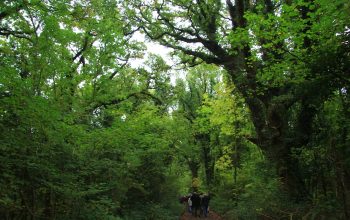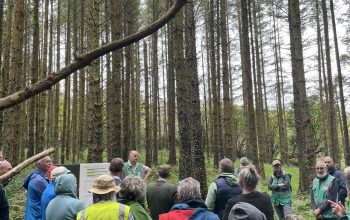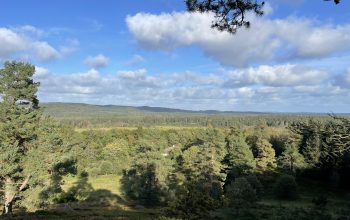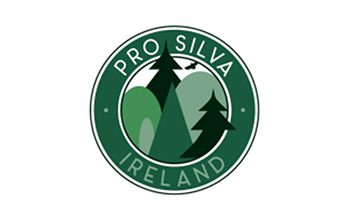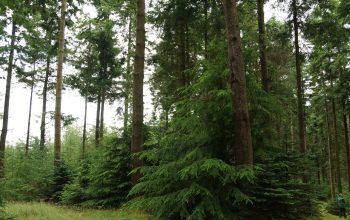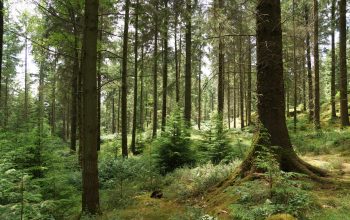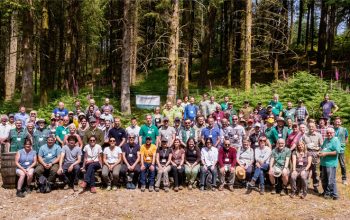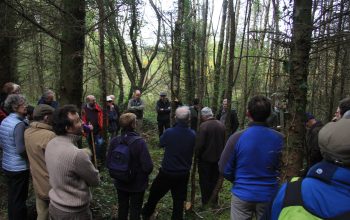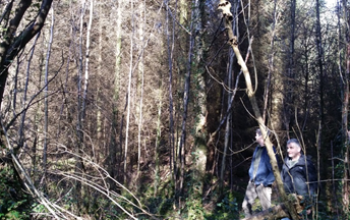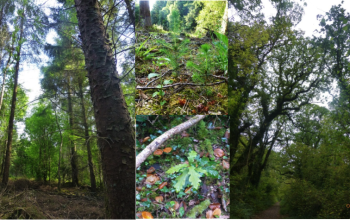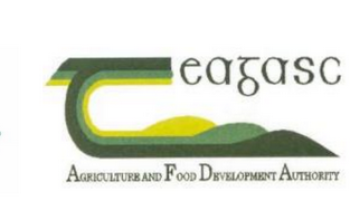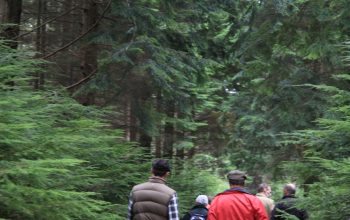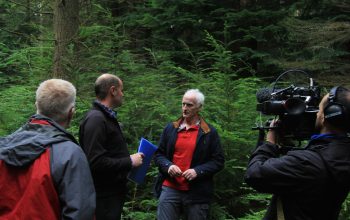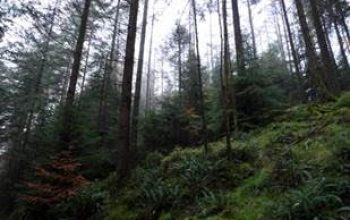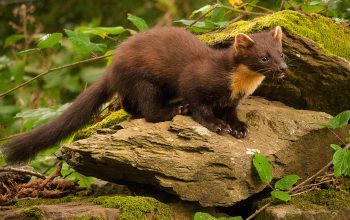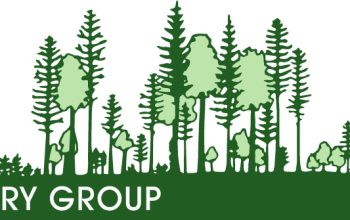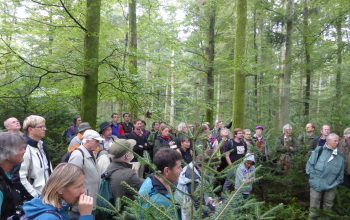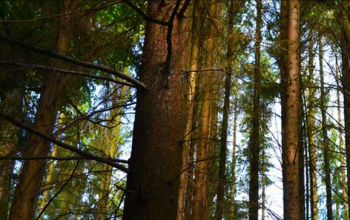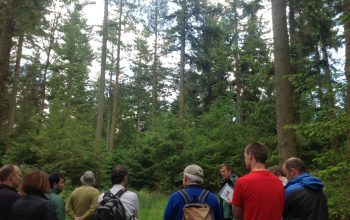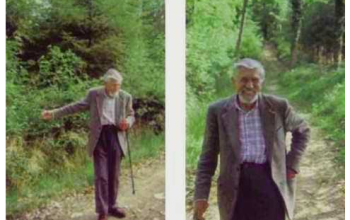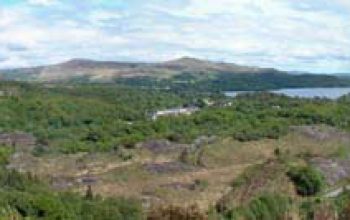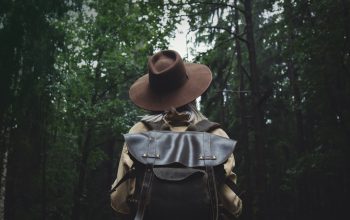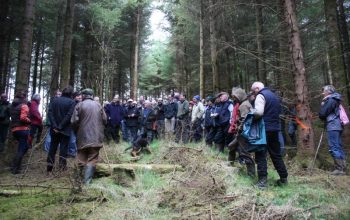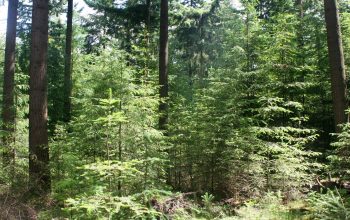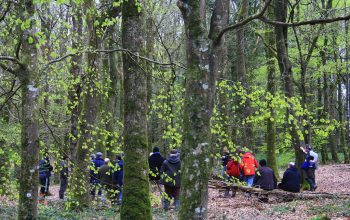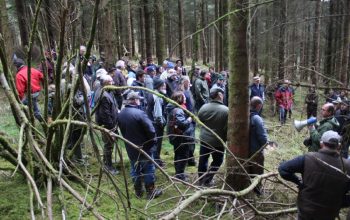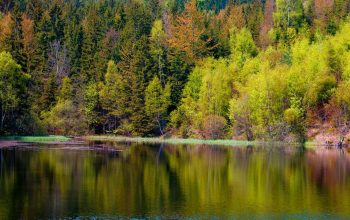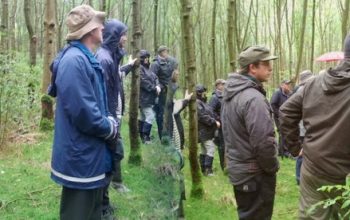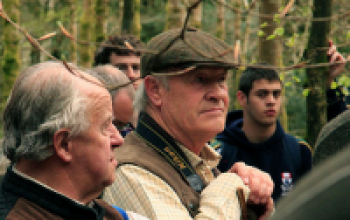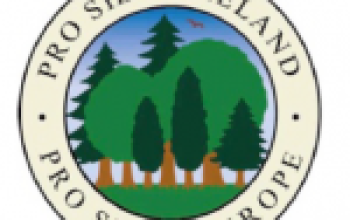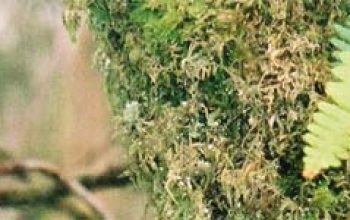Long-term Pro Silva Ireland committee member and our webmaster Cathy Fitzgerald, was selected as artist of the month by the international art.earth network. Pro Silva Ireland’s committee reflects the diversity of folk involved in forestry and woodland on the island of Ireland and includes foresters, educators, ecologists, contractors and forest owners like Cathy. Here’s what Cathy wrote in reponse to her selection.
Ahead of the international summit on cultural responses to ‘Evolving the Forest‘ taking place in Dartington Hall, near Totnes, Devon, England this June, Cathy was asked by Mark Leahy, of the Directors of the international ecoart network art.earth, to respond to some questions and discuss her work as featured art.earth artist of the month.
Reposted article from art.earth below:
The Hollywood Forest Story: an ongoing eco-social art practice for permanent forestry in Ireland and elsewhere

by Cathy Fitzgerald, 1st May 2019
My ongoing eco-social art practice The Hollywood Forest Story (begun in 2008) explores how a move toward ecological forestry will be a critical response to the ecological emergency. My practice draws insights from the art and ecology field and my involvement in forestry circles since I came to Ireland from New Zealand in the late 90s. This was also around the time I started my undergraduate studies in contemporary art practice at the National College of Art and Design in Dublin after previously working in research science.
Ireland has a sad forest history. Impoverished by colonization, only 1% of its native forests remained in 1900. Continuing rural hardship in Ireland saw justifiable enthusiasm in the 1950s for afforestation with monoculture plantations of the fast-growing North American conifers.
When I first came to Ireland, I worked with Jan Alexander, founder of Crann (the Irish word for ‘tree’), her nonprofit organisation. Crann drew public support for growing environmental awareness that monoculture clearfell forestry limits biodiversity, and negatively affects water quality and soil fertility. Crann successfully lobbied the Irish government to introduce incentives for significant native tree planting that have significant ecological and natural heritage value. I highlighted community planting of native trees in County Leitrim in a celebratory exhibition, The Local Project Revisited in 2006.
Today broadleaf trees continue to be planted but only as as a minimum percentage of national afforestation. Critically, Ireland lacks broadleaf timber volume and mills to cater for diverse tree species, despite their greater ecological and social amenity value. Overall, Ireland’s forestry remains, as in many part of the world, ecologically limited.

Jan Alexander and foresters, such as Paddy Purser, realised that establishing mixed species, mixed aged forests in perpetuity would be critical for a sustainable and life-enhancing forest industry. Interested in alternative continuous cover forestry as practised in Europe through the Pro Silva (Latin ‘for forests’) organisation, and with support from The Continuous Cover Forestry Group (CCFG), the UK Pro Silva group, they and others established Pro Silva Ireland in 2000. EU and UK Pro Silva forest experts then shared practical knowledge with pioneering Irish landowners, foresters and forestry students about how to transform Ireland’s monoculture tree plantations into naturally regenerating permanent forests. I later became part of these discussions as from 2000 I found myself living in a small plantation conifer woodland.
These forestry discussions were the background to my art college days. Not surprisingly, I found myself drawn to the pioneering eco-social art practices of Helen and Newton Harrison. I was fascinated by how they facilitated open participatory dialogues in their creative ecological practices. They welcomed artistic, scientific, political, and local knowledge to form inclusive practices to envision improved wellbeing for diverse communities and bioregions. Their practice of collaborative works and conversation fueled communities with new ideas of how to sustain natural environments, and importantly, expanded ideas of art, and education in general, toward what constitutes an ecological education. The Harrisons’ Serpentine Lattice (1992-3), that presents a restorative bioregional vision through participatory practices to ameliorate devastated US Pacific coastal forests, was particularly inspirational for me.

Similarly, my slow art ways of working across disciplines whilst living within a forest gave me opportunities to develop a fulfilling eco-social art practice. My work developed ecological depth as I realised that I had expert forestry contacts to help me and my husband transform the woodland and that I knew forest policymakers when I had become involved with my local Green Party. I also had the Harrisons’ work to guide me and their recent book The Time of the Force Majeure: After 45 Years Counterforce is on the Horizon (Harrisons, 2016), detailing their practices over many decades, is the book I wish I had when I first started. It is the critical text for any artist or art educator seeking to understand what an eco-social art practice may involve.
As transforming a conifer plantation will take several decades I found I had ample time, amongst other work, to develop my eco-social art practice chiefly through blogging about it at The Hollywood Forest Story. My Hollywood Forest Story became the basis of my art practice doctoral research. I came to understand that eco-social art practices, those that are embedded in a particular community over years, foster relevant ecoliteracy for practitioners and their audiences. Eco-social art practitioners and their audiences become ecoliterate – they quickly understand the connections of what sustains their environments and their lives (an illustrated, interactive online book gives details of my research).

Increasing ecoliteracy from eco-social art practices inevitably fosters our agency for change. We can see this in the new ideas and policies to safeguard environments that often arose from the Harrisons’ work. I found this happening unexpectedly in my work too, when on the basis of my eco-social art practice, I successfully argued that continuous cover forestry be the key point of the Green Party of Ireland and Northern Ireland’s forest policy in 2012. My practice also actioned me to promote the late Earth-lawyer Polly Higgins’ work on developing a law against the crime of ecocide to the Irish Green Party.
My forestry friends often smile at the small scale of Hollywood forest but they intuit that the story of Hollywood Forest, the ‘little wood that could’ adds a more public vision to how forestry must change. And just a few months ago, something important happened in Irish forestry. On the back of the work of Pro Silva Ireland, the Irish Department of Agriculture announced the first pilot scheme to financially assist landowners to move toward continuous cover forestry. Pro Silva Ireland’s guidebook on how to transform a plantation into a forest has gone into its second printing and Pro Silva Ireland’s first two training days last month were oversubscribed.

Looking back, it has taken much hard work and many conversations over some decades to develop the beginnings of sustainable vision for Ireland’s forests. Continuous cover forestry is to be welcomed but given how fast the planetary ecological emergency is unfolding, and the short decade deadline climate scientists have announced to change our ways, such integrative forestry practices must be mainstreamed with the utmost urgency. Forestry education will have to recognize the endgame plantation forestry promotes and reinvent itself rapidly. And dialogical creative practices must be recognized for their significant role to reinvent education more broadly, to help communities imagine how living well with forests, lands, rivers, oceans is essential for a sustainable, just and beautiful world.
Cathy Fitzgerald PhD
Cathy’s PhD thesis ‘Living Well with Forests to articulate eco-social art practice’ (2018) and her interactive ebook on the development of her ongoing Hollywood Forest Story can be read here
Follow The Hollywood Forest Story at https://hollywoodforest.com/ – comments always welcome!

